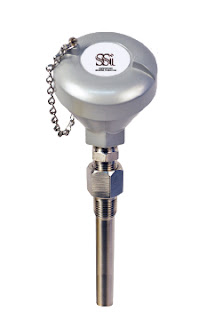In the rapidly evolving field of process instrumentation and measurement & control, artificial intelligence (AI) is reshaping how industries operate. With the advent of AI-powered tools, automation systems are becoming more intelligent, efficient, and capable of making real-time decisions. Despite these advancements, the role of the technical sales engineer remains crucial. Far from being replaced by AI, sales engineers will continue to play a vital role, complementing AI tools and providing essential human interaction that customers will still value.
AI in Process Instrumentation and Control
AI technologies are transforming the process industries by enabling more sophisticated data analysis, predictive maintenance, and autonomous decision-making. AI algorithms can analyze vast amounts of data generated by sensors, controllers, and field devices to optimize operations, reduce downtime, and enhance efficiency.
AI can help fine-tune processes to achieve better outcomes through real-time adjustments based on advanced predictive models in measurement and control. With AI's ability to process large datasets and forecast potential issues, decision-making has become faster and more accurate. This technology is helping industries operate with more precision, reducing waste, improving safety, and driving down operational costs.
However, as intelligent as AI systems may become, they are tools—powerful, yes—but limited in scope. They operate within predefined boundaries and still require human oversight for implementing, fine-tuning, and interpreting complex situations. That's where the role of a technical sales engineer becomes essential.
The Evolving Role of the Technical Sales Engineer
Technical sales engineers have long played a key role in bridging the gap between technology and customer needs. They combine in-depth technical knowledge with strong communication skills to understand each client's unique requirements and recommend tailored solutions. In an AI-driven world, their role will not diminish but evolve in new and exciting ways.
As AI tools become more prevalent, technical sales engineers will guide customers through emerging technologies. Many industrial clients will still need assistance understanding how AI-driven solutions integrate with their existing systems and processes. AI tools are often complex, and while they can provide insightful data, they still need experts to interpret the information, understand the nuances, and provide actionable recommendations.
Moreover, AI cannot replicate the human element of trust. Customers often rely on sales engineers for technical advice and reassurance. A well-trained technical sales engineer will understand the customer's long-term objectives and concerns in ways AI tools cannot. They will serve as advisors who know the industry inside and out, providing valuable insight into how the latest technologies can be adapted to meet specific operational goals.
Complementing AI with Human Expertise
While AI can automate many tasks, it cannot build client relationships and trust. Technical sales engineers, on the other hand, provide human empathy and experience. The role of a sales engineer will increasingly involve interpreting AI-generated data and helping customers make sense of it in the context of their unique needs and processes.
For example, an AI system might predict a potential equipment failure based on sensor data, but it would be the sales engineer who explains to the client what this means for their specific operation, which parts need to be addressed, and how it fits into their broader maintenance schedule. They will provide customized, value-added services, helping clients navigate the complexities of AI-driven systems.
Furthermore, sales engineers will be critical facilitators in deploying AI technologies, offering guidance during integration and helping clients optimize their use of AI tools. Whether selecting the proper AI-driven instrumentation or troubleshooting issues arising during implementation, human expertise will be crucial to ensure smooth transitions and maximize value from the new technologies.
Why Customers Will Continue to Value Human Sales Engineers
The personal touch and problem-solving abilities of technical sales engineers will remain irreplaceable. Customers in process industries seek more than just products—they want comprehensive solutions tailored to their specific challenges. The technical sales engineer can assess customer needs with a level of intuition and understanding that AI systems cannot match. In industries where safety, compliance, and reliability are critical, having a trusted expert on hand to navigate the complexities of new technologies is invaluable.
Moreover, AI systems may be brilliant but not infallible. They rely on data and models, which may not always capture every aspect of an industrial operation. Human sales engineers bring experience and a deep understanding of how real-world conditions impact technology performance, offering insights that AI might miss.
A Future Built on Collaboration
As artificial intelligence continues to transform process instrumentation, measurement, and control, the role of the technical sales engineer will become even more integral. By complementing AI tools with their technical expertise, problem-solving abilities, and human connection, sales engineers will continue to provide value in ways AI cannot. In a world increasingly dominated by automation, combining AI-driven insights and human expertise will provide the best outcomes for customers looking to thrive in the next era of industrial innovation.
312 Park Avenue Unit 145
Clarendon Hills, IL 60514-0145
Phone: 630-321-9646
https://alliancets.com

















